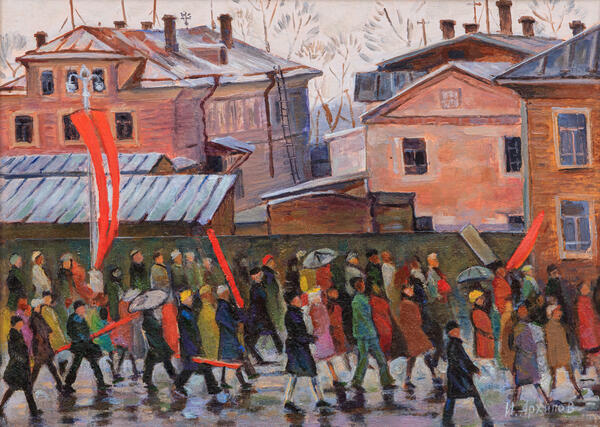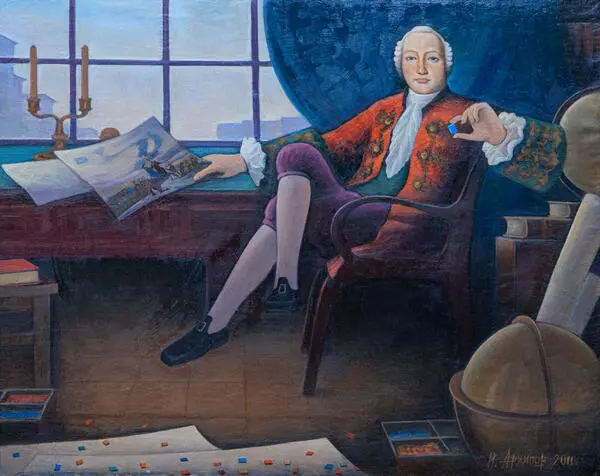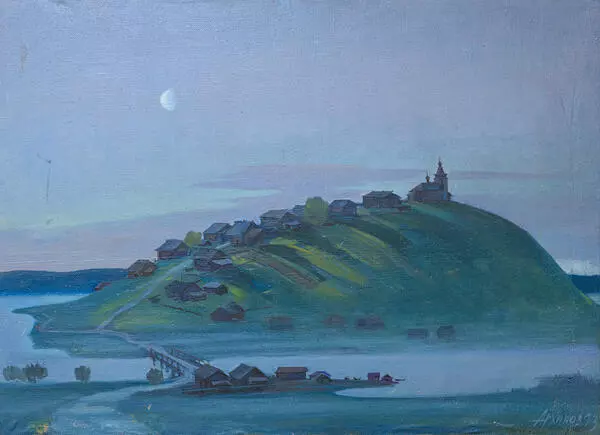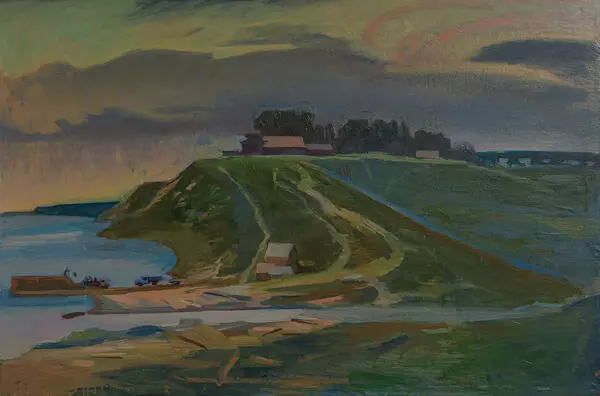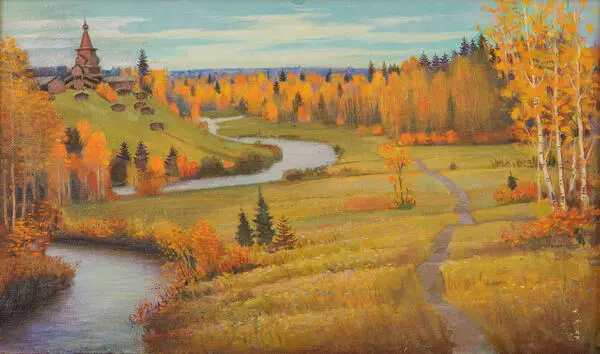Ivan Arkhipov painted ‘May 9. After the Demonstration’ with oil. The artist depicted a column of people returning from a solemn procession in honor of Victory Day; their figures are set against a cityscape background. Most people are dressed up and wear bright clothes. Some of them carry red banners. The artist depicted a rainy spring day: the people’s images are reflected in the wet asphalt in the lower part of the painting.
In the USSR, the celebration of Victory Day started immediately after the war. May 9 was a day off in 1945–1947 — then it became a working day until the mid-1960s. In those years, there were hardly any mass celebrations held — they were limited to demonstrations and concerts. In large cities, fireworks were used to celebrate this holiday. There were no annual parades on Moscow’s Red Square that modern Russians are so accustomed to — after the first parade in June 1945, the next one was held only twenty years later in 1965.
Ivan Arkhipov, who painted ‘May 9. After the Demonstration’, was born in 1934, in the Gorky (Nizhny Novgorod) region. He graduated from the Ivanovo Art School and the First Experimental Studio of Artistic Design at the Union of Artists of the USSR in Solnechnogorsk, a town near Moscow. Then Arkhipov served in the Northern Fleet and moved to Arkhangelsk.
The artist traveled widely through the Arkhangelsk region and made sketches of northern wooden architecture. In 1980, he presented a series of his artworks at the exhibition called ‘Northern Churches’. Moreover, Arkhipov participated in the competition that was organized by Malye Korely Museum Complex and made interior designs for the Palace of Pioneers and the Palace of Sports. Several churches and wooden chapels were built in the Arkhangelsk region according to his designs.
Landscapes played an important role in Ivan Arkhipov’s painting. The artist worked in Socialist Realism style. He created genre paintings featuring the everyday life of Soviet people. Socialist Realism art was believed to promote patriotism and reinforce the belief in communist ideals.
In the USSR, the celebration of Victory Day started immediately after the war. May 9 was a day off in 1945–1947 — then it became a working day until the mid-1960s. In those years, there were hardly any mass celebrations held — they were limited to demonstrations and concerts. In large cities, fireworks were used to celebrate this holiday. There were no annual parades on Moscow’s Red Square that modern Russians are so accustomed to — after the first parade in June 1945, the next one was held only twenty years later in 1965.
Ivan Arkhipov, who painted ‘May 9. After the Demonstration’, was born in 1934, in the Gorky (Nizhny Novgorod) region. He graduated from the Ivanovo Art School and the First Experimental Studio of Artistic Design at the Union of Artists of the USSR in Solnechnogorsk, a town near Moscow. Then Arkhipov served in the Northern Fleet and moved to Arkhangelsk.
The artist traveled widely through the Arkhangelsk region and made sketches of northern wooden architecture. In 1980, he presented a series of his artworks at the exhibition called ‘Northern Churches’. Moreover, Arkhipov participated in the competition that was organized by Malye Korely Museum Complex and made interior designs for the Palace of Pioneers and the Palace of Sports. Several churches and wooden chapels were built in the Arkhangelsk region according to his designs.
Landscapes played an important role in Ivan Arkhipov’s painting. The artist worked in Socialist Realism style. He created genre paintings featuring the everyday life of Soviet people. Socialist Realism art was believed to promote patriotism and reinforce the belief in communist ideals.

